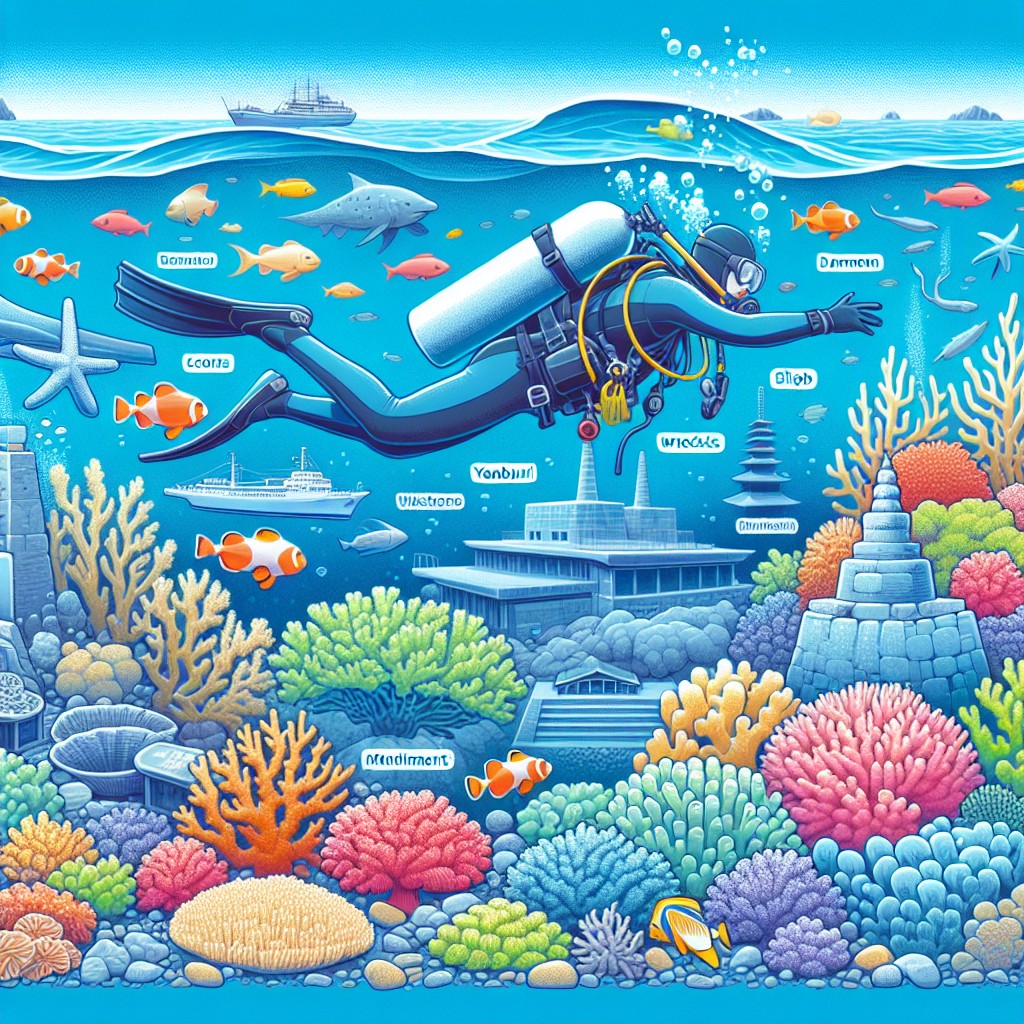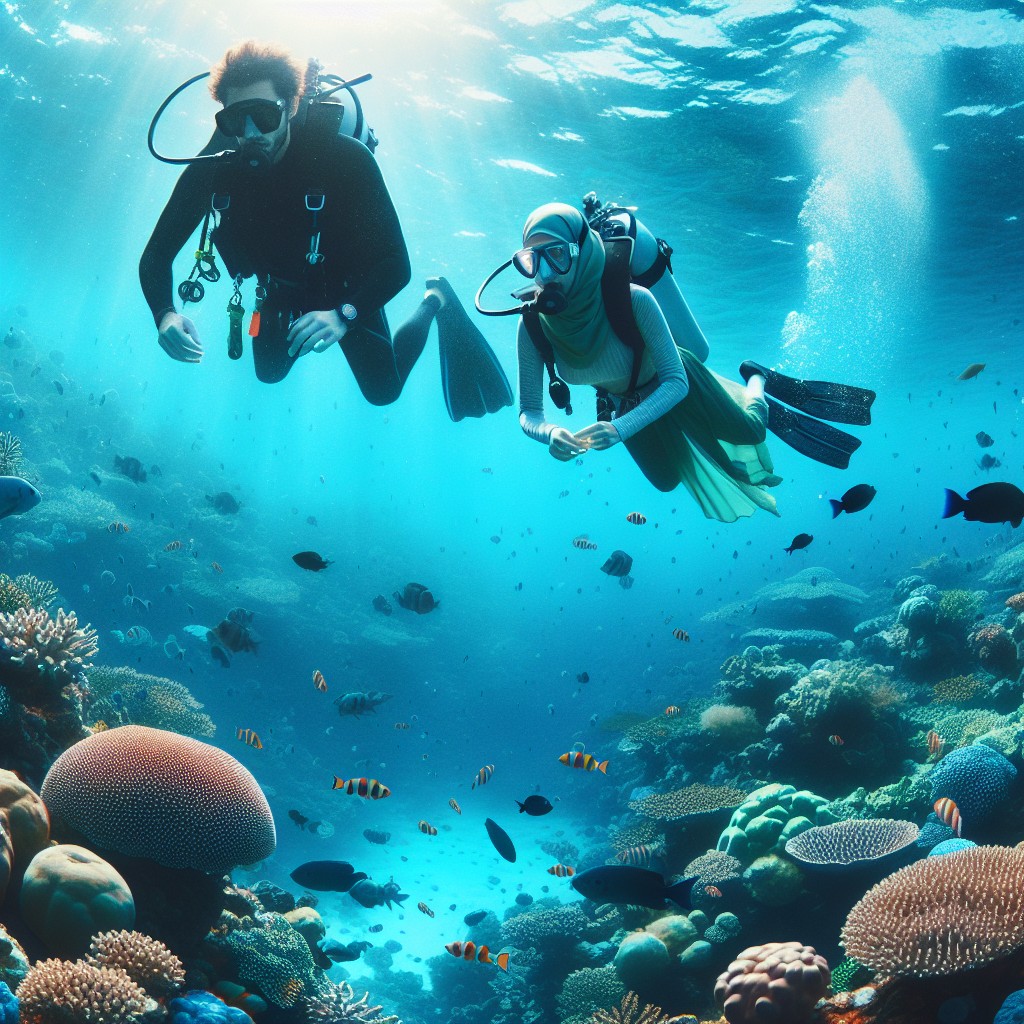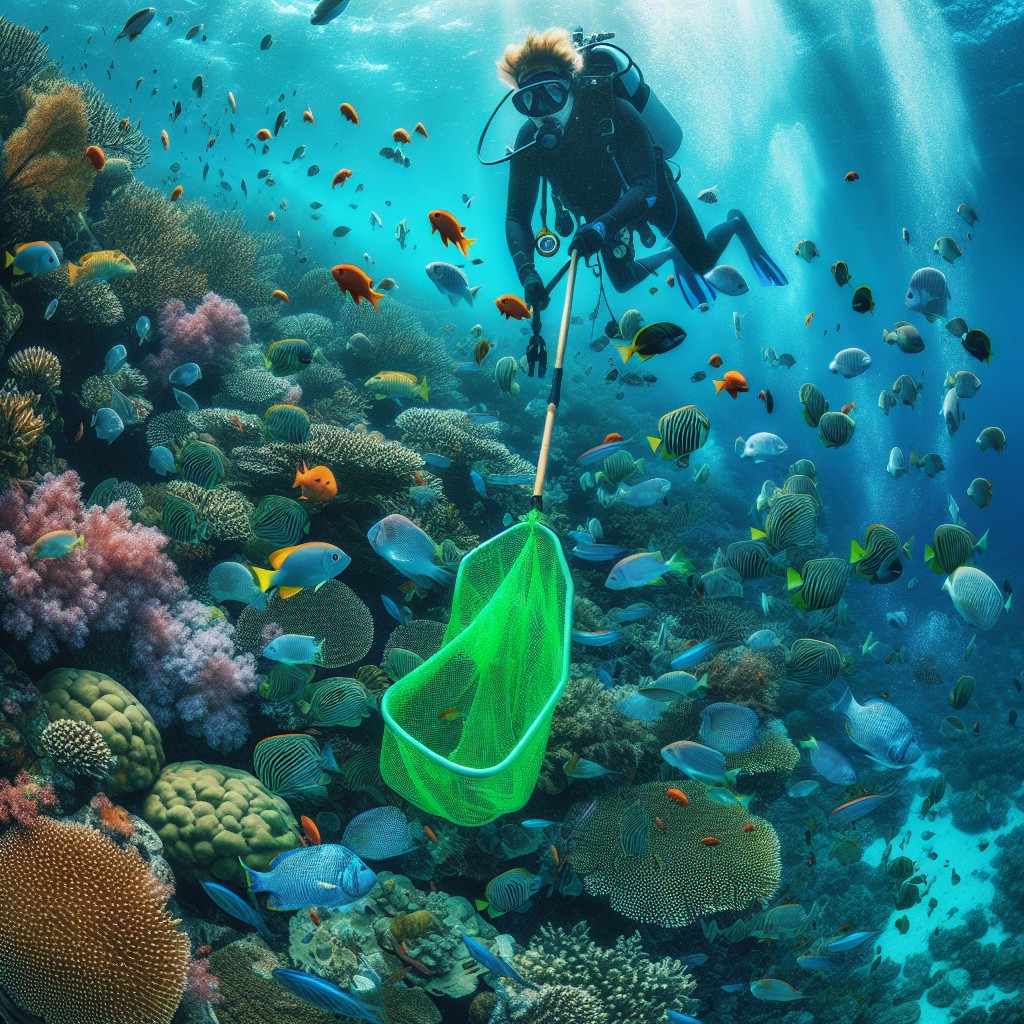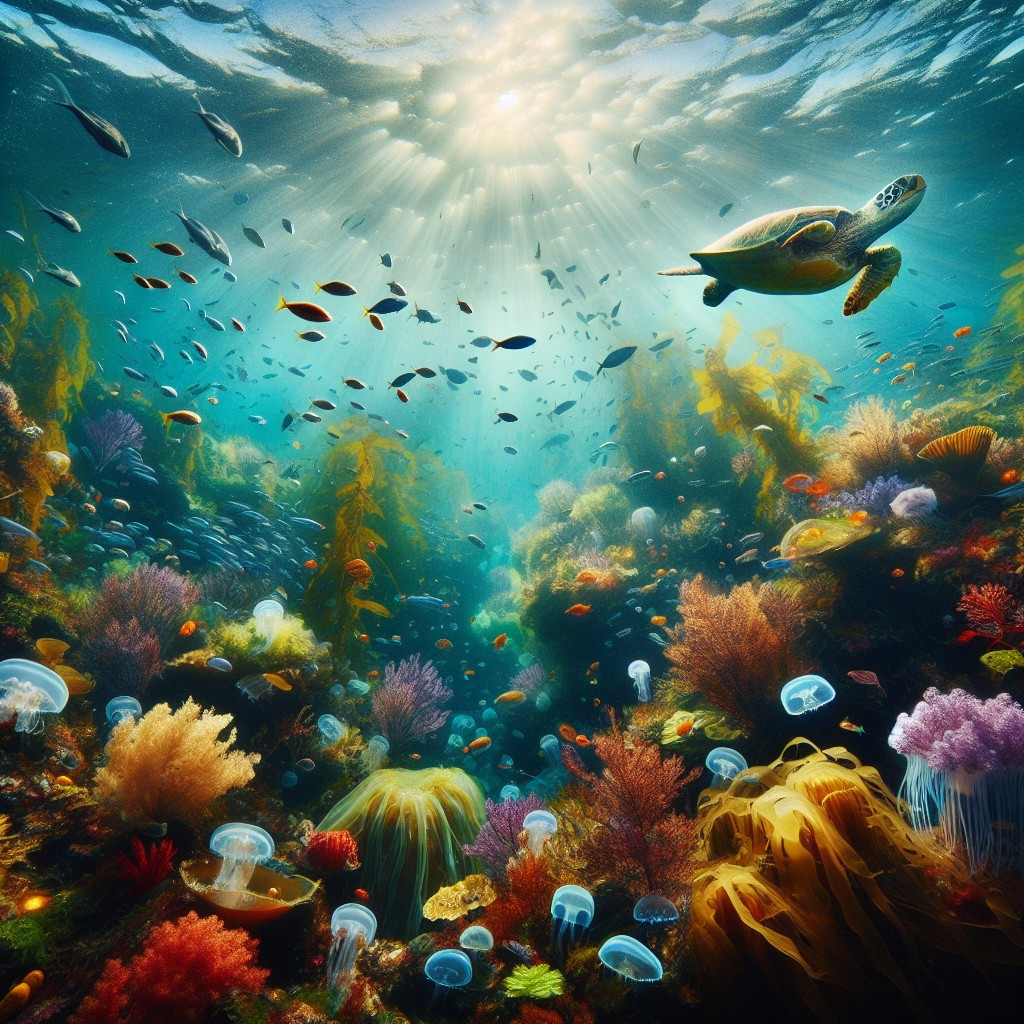Diving in Japan
Introduction to Scuba Diving
Japan is an exceptional destination for scuba diving enthusiasts, offering a diverse array of underwater experiences due to its unique geographical location surrounded by the Pacific Ocean and the Sea of Japan. This positioning allows for rich marine ecosystems and an abundance of diverse marine life. Divers can explore colourful coral reefs, vibrant fish species, and even engage in thrilling encounters with larger marine animals.
For those considering a diving adventure, understanding the diving conditions is essential. Factors such as water temperature, visibility, and current strength can vary significantly across Japan’s diving sites. Further details about these conditions can be found in our article on diving conditions in Japan.
Best Dive Sites Overview
Japan boasts some of the most incredible dive sites globally. From the warm waters of Okinawa to the unique underwater landscapes of Hokkaido, divers have plenty of options to choose from. Below is a summary of some of the top dive locations in Japan:
| Dive Site | Location | Notable Features |
|---|---|---|
| Kerama Islands | Okinawa | Crystal clear waters, sea turtles, hard corals |
| Yonaguni Island | Okinawa | Underwater ruins, vibrant marine life |
| Ishigaki Island | Okinawa | Manta ray sightings, tropical coral reefs |
| Ogasawara Islands | Tokyo (24-hour ferry) | Migratory marine life including humpback whales |
| Miura Peninsula | Kanagawa | Scenic coastal dives, unique marine ecosystems |
| Hokkaido | Northern Japan | Ice diving opportunities, diverse underwater life |
The diverse offerings, ranging from coral reefs to wreck diving opportunities, make Japan a prime spot for both beginner and experienced divers. For scuba divers planning their next diving holiday, exploring these best dive sites in Japan opens up a world of underwater adventures, accommodating all levels of expertise. Divers can also learn about iconic experiences such as diving with manta rays in Japan or exploring the fascinating underwater ruins of Yonaguni.
Okinawa Diving
Okinawa is a prime location for scuba diving enthusiasts. Its warm tropical climate, coupled with stunning underwater landscapes, creates one of the best dive sites in Japan. The region’s coral reefs and diverse marine life make it a must-visit for anyone planning their next dive holiday.
Coral Reefs of Okinawa
The coral reefs of Okinawa are among the most vibrant and varied in Japan. With locations such as the Kerama Islands, Yonaguni Island, and the Miyako Islands, divers can expect crystal-clear waters and a rich tapestry of coral formations.
| Location | Highlights | Distance from Naha |
|---|---|---|
| Kerama Islands | Hard corals, turtles, pristine beaches | ~1 hour by ferry |
| Yonaguni Island | Unique underwater geological formations | ~520 km south |
| Miyako Islands | Tropical reefs and diverse marine inhabitants | ~300 km east |
| Blue Cave | Stunning light effects and swim-throughs | ~30 minutes by boat |
Notably, the Kerama Islands stand out with their “AA” water quality rating, ensuring an exceptional diving experience. The coral environments are home to various species, including batfish and anemonefish, making it an ideal spot for both novice and experienced divers.
Marine Life Diversity
The marine biodiversity in Okinawa is remarkable. Divers can interact with a variety of sea creatures, including sea turtles and manta rays, particularly around Ishigaki Island, where manta rays are prevalent from July to September.
Okinawa’s waters function as a habitat for a multitude of species, making each dive a unique adventure. Here’s a glimpse of the marine life divers might encounter:
| Species | Features | Best Dive Locations |
|---|---|---|
| Sea Turtles | Graceful and majestic | Kerama Islands |
| Manta Rays | Large and friendly | Ishigaki Island |
| Nudibranchs | Colorful and diverse | Blue Cave, Manza Point |
| Anemonefish | Playful inhabitants | Sunabe Seawall |
For more information on the different marine species, you can explore marine life in Japan waters.
Okinawa not only offers breathtaking underwater vistas but also a chance to engage with vibrant ecosystems. Divers are encouraged to explore the numerous sites, each brimming with life and beauty, ensuring a memorable diving experience. Whether one is seeking adventure or serenity, the diving opportunities in Okinawa are unmatched, prompting many to feature this region prominently in their dive plans.
Kanagawa Prefecture Dives
Kanagawa Prefecture provides an enticing array of dive sites perfect for divers planning their next holiday. Conveniently located near major urban centres like Yokohama and Tokyo, the region offers easy access to diverse marine ecosystems. In this section, the focus will be on two prominent areas: the Miura Peninsula and the highlights of Hayama and Jogashima.
Miura Peninsula Exploration
The Miura Peninsula is renowned for its variety of dive sites, catering to both novices and seasoned divers. The area features rich marine life and diverse underwater landscapes, making it an attractive destination for diving enthusiasts.
| Feature | Details |
|---|---|
| Location | Near Tokyo (1-2 hours drive) |
| Diving Level | Suitable for beginners to advanced divers |
| Popular Sites | Hayama, Kamakura, Jogashima |
| Marine Life | Diverse ecosystems, abundant fish species |
Facilities in the Miura Peninsula provide guided excursions, equipment rental, and certification courses, ensuring that divers of all levels can fully enjoy their underwater experiences. For those interested in exploring further, the area is well connected to multiple dive spots offering various conditions and marine encounters.
Hayama and Jogashima Highlights
Hayama, located just an hour’s drive from Tokyo, is celebrated for its stunning underwater scenery and abundant marine life. The lush seaweed forests in Hayama provide an inviting habitat for a wide variety of nudibranch species, making it a favourite spot for underwater photographers. Post-dive, a plethora of restaurants and cafes are available to relax and enjoy local cuisine.
Jogashima, adjacent to Hayama, offers exciting diving experiences with diverse underwater terrain. The waters here teem with large schools of fish and host over 30 types of nudibranch under optimal conditions, creating a vibrant atmosphere for divers.
| Dive Spot | Highlights |
|---|---|
| Hayama | Lush seaweed forest, variety of nudibranchs |
| Jogashima | Diverse terrain, large fish schools, abundant marine life |
Both Hayama and Jogashima are integral parts of the best dive sites in Japan, with each location promising unique encounters and unforgettable underwater adventures. Divers can also explore related experiences, such as diving with sharks in Japan or wreck diving in Japan, depending on their preferences.
Chiba Prefecture Dive Spots
Chiba Prefecture is an attractive choice for scuba divers, especially those based in Tokyo and Yokohama, as it provides convenient access to a variety of dive sites. The diving spots are predominantly located at the tip of the Chiba peninsula along the Pacific Ocean. This area offers a unique combination of tropical and cold water marine life due to the convergence of warm Black current and cold current along the coast.
Shore Diving in Chiba
Shore diving in Chiba is widely appreciated for its accessibility and diverse underwater environments. Popular sites like Ito Tateyama provide excellent opportunities for divers to explore a mix of rocky and sandy seabeds. Notably, the “Shark Scramble” at Ito Tateyama has gained attention for its shark interactions, with special efforts made to protect marine life by redirecting sharks away from fishing nets.
| Dive Site | Access | Key Features |
|---|---|---|
| Ito Tateyama | 2 hours from Tokyo | Shark Scramble, rocky and sandy beds |
| Okinoshima | 3 hours from Tokyo | Shallow reefs, AA-rated waters |
Unique Chiba Marine Life
The diverse marine life around Chiba is a major draw for divers. The area’s mix of warm and cold currents creates a vibrant ecosystem teeming with a variety of species. Divers can encounter everything from colourful reef fish to larger pelagic species.
Specific highlights of Chiba’s underwater fauna include:
- Hammerhead sharks during seasonal migrations
- Diverse coral reefs
- Unique combinations of species due to varying water temperatures
Chiba’s unique marine environment not only offers standard diving experiences but also exciting opportunities such as diving with sharks in Japan. For those looking to enhance their diving skills, various dive schools provide courses tailored to different levels of experience. Enhanced knowledge can significantly contribute to a more rewarding diving experience. For broader options, divers may also consider exploring locations further afield, such as the wreck diving in Japan opportunities.
Chiba Prefecture’s dive spots are a vital part of the overall experience of scuba diving in Japan, appealing to anyone planning their next dive holiday. Whether divers are interested in partaking in simple shore dives or seeking unique marine interactions, Chiba provides a versatile and engaging environment. To understand more about the general conditions you can expect, check out our article on diving conditions in Japan.
Ishigaki Island Adventures
Ishigaki Island, part of the Okinawa prefecture, is a stunning destination for scuba divers. Known for its pristine beaches, vibrant coral reefs, and clear blue waters, it provides an unforgettable diving experience. Two of the most spectacular attractions here are the majestic manta rays and the enigmatic Yonaguni Monument.
Manta Rays at Ishigaki
Ishigaki Island is famous for its seasonal visitors, the manta rays. These gentle giants frequent the waters primarily from July through September. Divers have the opportunity to observe these magnificent creatures gliding gracefully through the water, making it a bucket-list experience for underwater enthusiasts.
The manta rays are often seen at specific dive sites, which are renowned for their clear visibility and rich marine life. Visitors can expect to encounter not only manta rays but also an array of other marine species, contributing to the area’s reputation as one of the best dive sites in Japan.
| Dive Site | Depth (meters) | Best Time for Manta Rays | Visibility (meters) |
|---|---|---|---|
| Manta Point | 18 – 30 | July – September | 25 – 30 |
| Cape Kyan | 20 – 35 | July – September | 20 – 25 |
For more insights on encountering manta rays, check out our article on diving with manta rays in Japan.
Yonaguni Monument Exploration
The Yonaguni Monument attracts divers with its mysterious underwater formations, located near Ishigaki Island. This site features intriguing step-like rocks, which many speculate to be either remnants of an ancient sunken civilization or natural geological formations.
The monument offers thrilling exploration opportunities for experienced divers. Amidst the underwater paths and structures, divers may also encounter abundant marine life, including hammerhead sharks that migrate through the area from November to June, as well as sea turtles, moray eels, and butterfly fish year-round.
| Feature | Description |
|---|---|
| Depth (meters) | 18 – 30 |
| Type of Dive | Wreck and geological exploration |
| Marine Life Encountered | Hammerhead sharks, sea turtles, moray eels, butterfly fish |
For further details on the Yonaguni Monument, visit our page on the underwater ruins of Yonaguni.
Ishigaki Island serves as a delightful gateway into Japan’s diverse underwater ecosystems. With its spectacular manta rays and fascinating Yonaguni Monument, it undoubtedly ranks among the premier dive destinations in Japan.
Hokkaido Diving Experiences
Hokkaido, the northernmost island of Japan, is a remarkable destination for scuba diving enthusiasts. Its unique geographical location, surrounded by the Pacific Ocean and the Sea of Japan, offers diverse experiences with an abundance of marine life.
Biodiversity in Hokkaido
The waters around Hokkaido are home to an impressive variety of marine species. This region boasts the most diverse whale populations in Northeastern Asia, making it a haven for underwater explorers. The biodiversity includes a mix of kelp forests, sea lions, and rare species like giant octopuses.
| Marine Life | Description |
|---|---|
| Whales | Including various species, providing opportunities for whale watching while diving |
| Sea Lions | Playful and curious, often encountered near dive sites |
| Giant Octopuses | Known for their size and intelligence, fascinating to observe in their natural habitat |
| Kelp Forests | Ancient forests that provide unique diving experiences and habitats for numerous species |
For more on the enchanting aquatic life one can expect, readers can refer to our section on marine life in Japan waters.
Unique Diving Locations
Several dive spots in Hokkaido stand out due to their unique features and underwater experiences. Each location offers something distinct, whether it’s the vibrant marine life, historical underwater sites, or natural wonders.
| Dive Site | Highlights |
|---|---|
| Shiretoko Peninsula | Renowned for its rich biodiversity and captivating underwater landscapes |
| Usujiri | Offers drift diving opportunities and encounters with dynamic marine life |
| Shiretoko Rausu | Known for its impressive kelp forests and diverse species |
| Cape Shakotan | Famous for crystal-clear waters and the chance to see sea lions and various fish species |
For those interested in adventurous colder conditions, Hokkaido also offers ice diving in Hokkaido, which presents a unique challenge and experience not found in most diving locations.
Divers planning their next trip to Hokkaido will find not only vibrant marine ecosystems but also a range of experiences that cater to different skill levels and interests. With its unique dive locations and rich biodiversity, Hokkaido remains one of the best dive sites in Japan.



